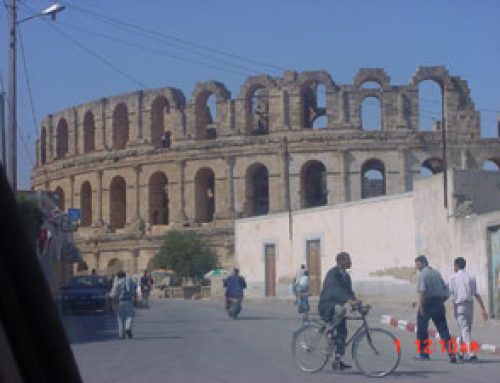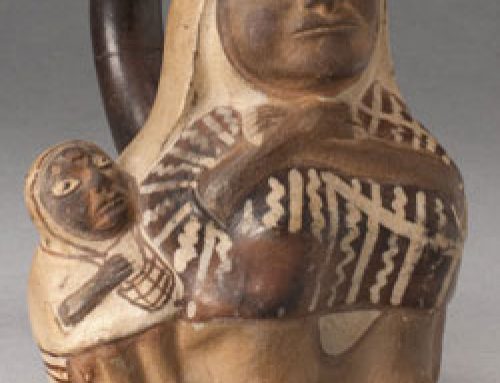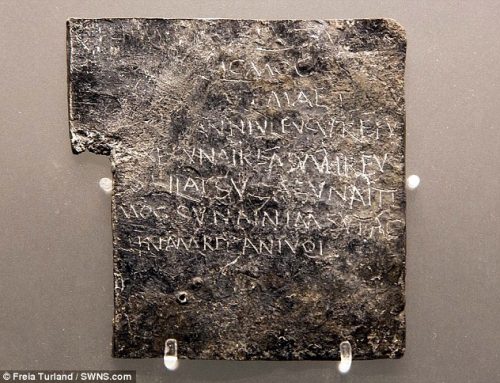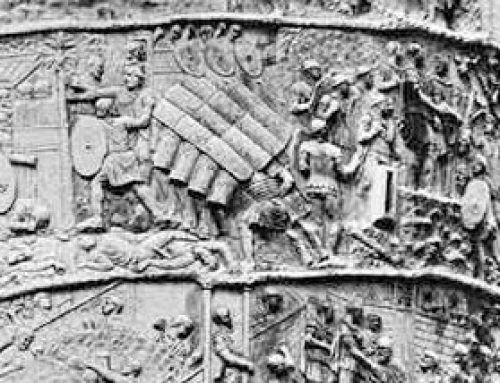
First Style Roman wall painting (now in the Louvre)
Wall painting in ancient Rome
There was also a lot of wall painting to decorate the walls of houses during this time. Art historians sometimes divide the wall painting of the first century AD into four different styles. That’s because of the many different styles of wall painting that painters used at Pompeii.
Roman houses
Earlier Roman art
Greek painting
Egyptian painting
All our Ancient Rome articles
The First Style
In the first style, the fresco painting on the walls of houses is meant to look like marble panels (but it’s a lot cheaper than marble panels!).
What is a fresco?
Paint your own fresco
What is marble?

Second Style Roman wall painting (with a wreath added)
Second Style painting
In the Second Style, the artists first added little things to the imitation marble panels in their paintings. This one has a garland. Other paintings have fruit, or flowers, or birds perched here and there. But then they got more ambitious and started to add whole complicated scenes, or sets of architectural details, as if you were looking out at a much larger room or building.
Roman architecture

Second Style Roman wall painting (with people and scenes). From Pompeii’s Villa of the Mysteries.
Here in this painting from the Villa of the Mysteries at Pompeii you can see full-size people talking to each other and sitting on chairs, as if there were another room there instead of a wall.

Third Style Roman wall painting from Pompeii
Third Style Roman painting
Then in the Third Style, Roman wall paintings became very delicate and fanciful. Painters still put in lots of architectural detail. But the columns were too thin to hold anything up, and everything was dramatic but dreamlike.

Icarus falling (on a wall painting from Pompeii,about 79 AD)
Fourth Style Roman painting
And then Fourth Style Roman wall painting combines these marble panels and architectural ideas with actual landscape paintings and scenes from Greek mythology. In this painting from Pompeii, for example, we see Icarus falling out of the sky.
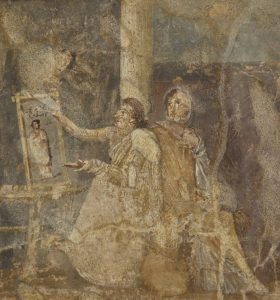
A Roman woman painting, from the House of the Empress of Russia, Pompeii
Later Roman painting
After Pompeii was buried in 79 AD, we have fewer examples of Roman wall painting. But wall painting in general doesn’t seem to have changed much after that. People used one of these styles, often the First Style plain fake marble, or Fourth Style large paintings, to decorate their houses during the rest of the Roman Empire.
Learn by doing: draw pictures in First Style, Second Style, etc.
Later Roman art
Bibliography and further reading about Roman art:
Ancient Roman Art, by Susie Hodge (1998). Easy reading.
Roman Art: Romulus to Constantine, by Nancy and Andrew Ramage (4th Edition 2004). The standard textbook.
A Coloring Book of Ancient Rome, from Bellerophon Books (1988). Easy reading.

